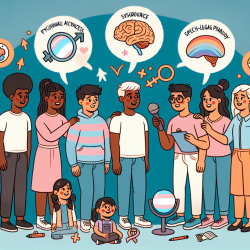Introduction
In the realm of healthcare, effective communication is pivotal in ensuring patient satisfaction and successful outcomes. The research article "Health care informational challenges for women diagnosed with cervical intraepithelial neoplasia: a qualitative study" underscores the communication barriers faced by women diagnosed with cervical intraepithelial neoplasia (CIN). This blog aims to provide practitioners with insights into improving their communication strategies and encourages further research into patient-provider interactions.
Understanding the Research Findings
The study conducted by Freijomil-Vázquez et al. (2019) identifies two main themes: communication gaps in the diagnosis and management of information, and participants' unmatched informational needs. The research highlights the critical moments where communication falters:
- Cervical cancer screening in primary care
- Waiting time until referral to specialized care
- First consultation in specialized care
- After consultation in specialized care
These gaps lead to confusion, anxiety, and a lack of understanding among patients, impacting their ability to participate in decision-making processes regarding their health.
Implementing Research Outcomes in Practice
To bridge these communication gaps, practitioners can adopt the following strategies:
- Provide Clear and Accessible Information: Ensure that patients understand the purpose of screenings and the implications of their results. Use layman's terms to explain medical jargon and encourage questions.
- Enhance Continuity of Care: Facilitate better coordination between primary and specialized care providers to ensure consistent messaging and follow-up.
- Develop Educational Materials: Create accessible educational resources, both digital and print, to provide patients with reliable information at any stage of their healthcare journey.
- Utilize Technology: Implement telehealth consultations to provide timely information and support, reducing the anxiety associated with waiting for in-person appointments.
Encouraging Further Research
While the study provides valuable insights, it also opens avenues for further research. Practitioners are encouraged to explore:
- The effectiveness of different communication strategies in diverse healthcare settings.
- The role of cultural and linguistic factors in patient-provider communication.
- Innovative technologies that can enhance patient education and engagement.
Conclusion
Effective communication is the cornerstone of patient-centered care. By addressing the informational challenges highlighted in the study, healthcare providers can empower women with CIN to make informed decisions about their health. Practitioners are urged to implement these strategies and contribute to ongoing research to enhance healthcare communication.
To read the original research paper, please follow this link: Health care informational challenges for women diagnosed with cervical intraepithelial neoplasia: a qualitative study.










